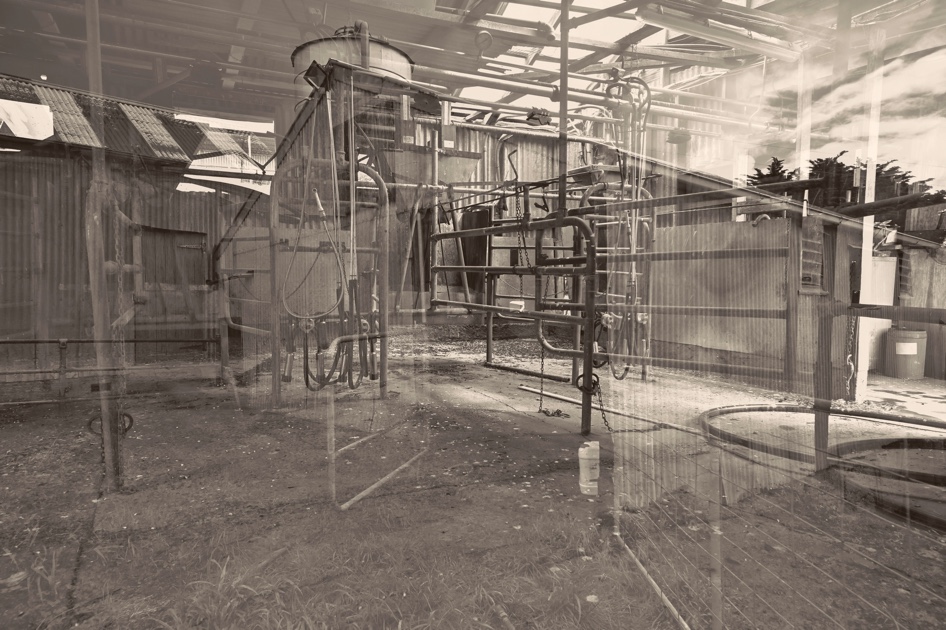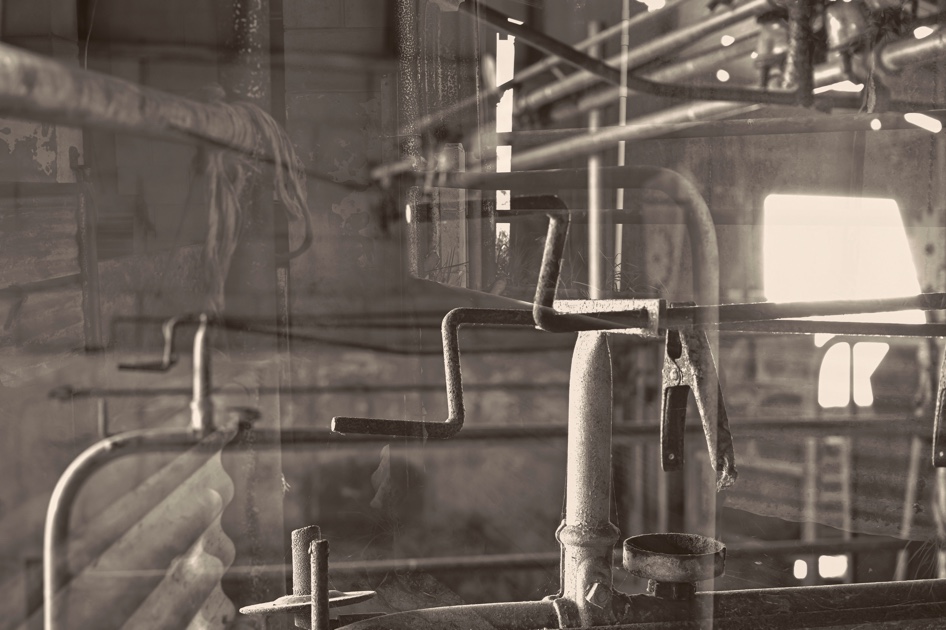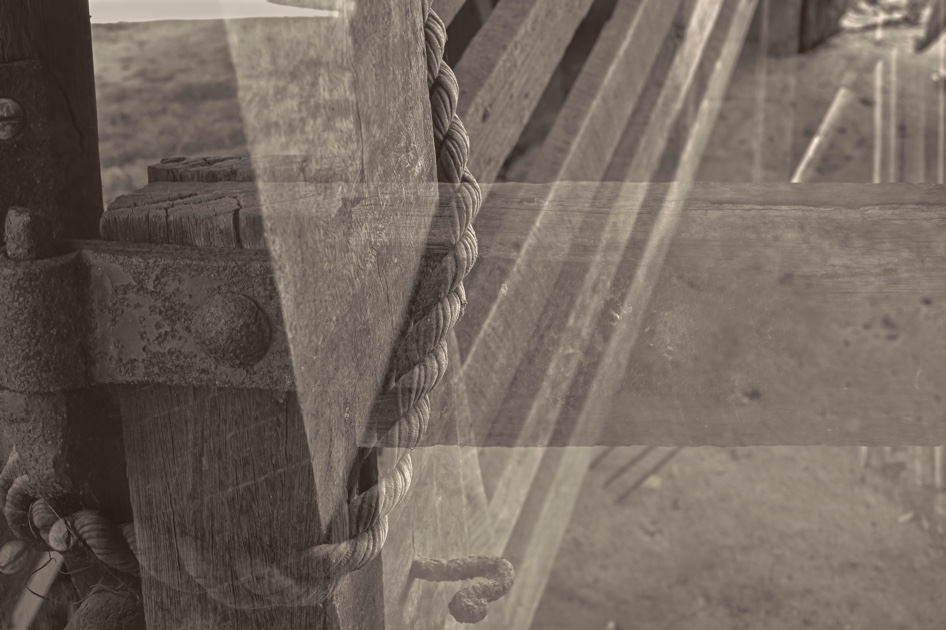The expansion of modern farms to accomodate robotic milking and other high-tech machinery, and urban sprawl has seen many smaller traditional farms being sold and divided.
Our second year part time Advanced Diploma student Russell Monson is documenting the early to mid 20th century cow sheds within these farms before they are all gone.
Russell's series 'Cow Sheds' will be displayed at our Second Year Advanced Diploma exhibition at PSC's pop-up gallery in Southbank on Wednesday 4 December.

Image by Russell Monson from is series 'Cow Sheds'
Why are traditional cow sheds being removed from the Australian landscape?
The traditional cow sheds of the early to mid-20th century are disappearing due to a number of factors. Firstly, the industry is changing, more and more larger farms with an increased use of technology including robotic milking are popping up. As a result the old, small sheds, are being replaced by large high-tech installations. The other significant factor leading to the disappearance of the sheds, is the increased spread of the urban area, and the consequent subdivision of dairy farms into hobby farms, housing estates, or other pursuits such as vineyards and a range of equine pursuits.
What is your connection to the dairy industry?
This area of interest is reinforced by the fact that I spent my childhood and teen years on a dairy farm, often helping with the milking in one of these old sheds … although it hasn’t been part of the series. Living in Warragul, a town in West Gippsland, some 110 km from Melbourne, we are on the fringe of the rapidly expanding metropolitan area. We witness the restructure of the dairy industry and changing land use are played out on a daily basis.

Image by Russell Monson from is series 'Cow Sheds'
How did you come up with the concept for this series?
I was inspired to capture some of the history of these sheds after a conversation with a local painter who is passionate about Australian landscapes and history. The images need to be more than idyllic landscapes with cow sheds insitu. The motivation and encouragement to explore some more creative options came from my semster 4 folio unit at Photography Studies College, and after some trial shots I settled on double exposures created in camera. I felt this was more ‘authentic’ than manipulating layers in post processing. The final images in the exhibition were created using a digital version of the traditional platinum technique.
Where did you shoot?
The cowsheds that I have shot so far have all been identified by personal contact, either personal acquaintances, or referrals from acquaintances. No one has declined to be involved, but there has been the occasional comment along the lines of ‘Why would you want to do that?’ or ‘It's full of old junk, I'd better tidy it up first’. An interesting piece of nostalgia, relates to one farm I visited, which had an old building that had been used as a wool shed / come dance hall. I recall regularly visiting it with my parents in my childhood (some 60 years ago). This building’s history went even further back, having been relocated in the 1890s using bullock team to move it some 5 or 6 km.

Image by Russell Monson from is series 'Cow Sheds'
Tell us about your passion for photography?
I purchased my first camera, an SLR while at university in the early 1970s, and have been a keen photographer ever since. I mainly photograph family events and holidays. Not only did I share the interest in photography with my wife, but she also had the same gear when we were married. Leaving full time work has enabled more time to pursue this passion.
Why did you decide to study photography?
After 10 years of temptation to enrol at PSC, I took the plunge in mid 2017 to complete the Pro Certificate, and after a semester break returned to complete the second year in 2019. Having never undertaken any formal study in the visual arts, the opportunity to learn about image design and colour theory, formal training in camera technique, and studio skills have been highlights. Video, compositing, and development of a conceptual folio have involved a steep learning curve in this last semester, but it has been very rewarding!

Image by Russell Monson from is series 'Cow Sheds'
Would you recommend PSC?
I believe that studying at PSC is not just for aspiring professional photographers/image makers. It is also highly relevant for anyone who wants to improve their camera craft, explore photographic traditions, and develop a skilled and conceptual approach to photography, supported and encouraged by fellow students and expert teachers. Studying part time, either evening or day time, leaves flexibility for other work and interests, and time to pursue your passion in photography.
Tell us about your upcoming exhibition 'Factum Magna' with your second year Advanced Diploma cohort at PSC's pop-up gallery in Southbank?
The opportunity to exhibit in a high profile space, and have work hung alongside images taken by talented and creative peers is very exciting, and from what I have seen from fellow students there is a real diversity, not only in the genre, but also in the style, concepts explored and presentation.
Please join Russell, and his wife Carol (also a PSC student) at our second year Advanced Diploma exhibition 'Factum Magna' on Wednesday 4 December from 6-8pm. It will be held at PSC's Pop-Up Gallery, on level 2 (next to American Rag), Southgate Centre, 3 Southgate Avenue, Southbank. Register for free here!

Monson Photo and Fibre Art: monson.net.au
